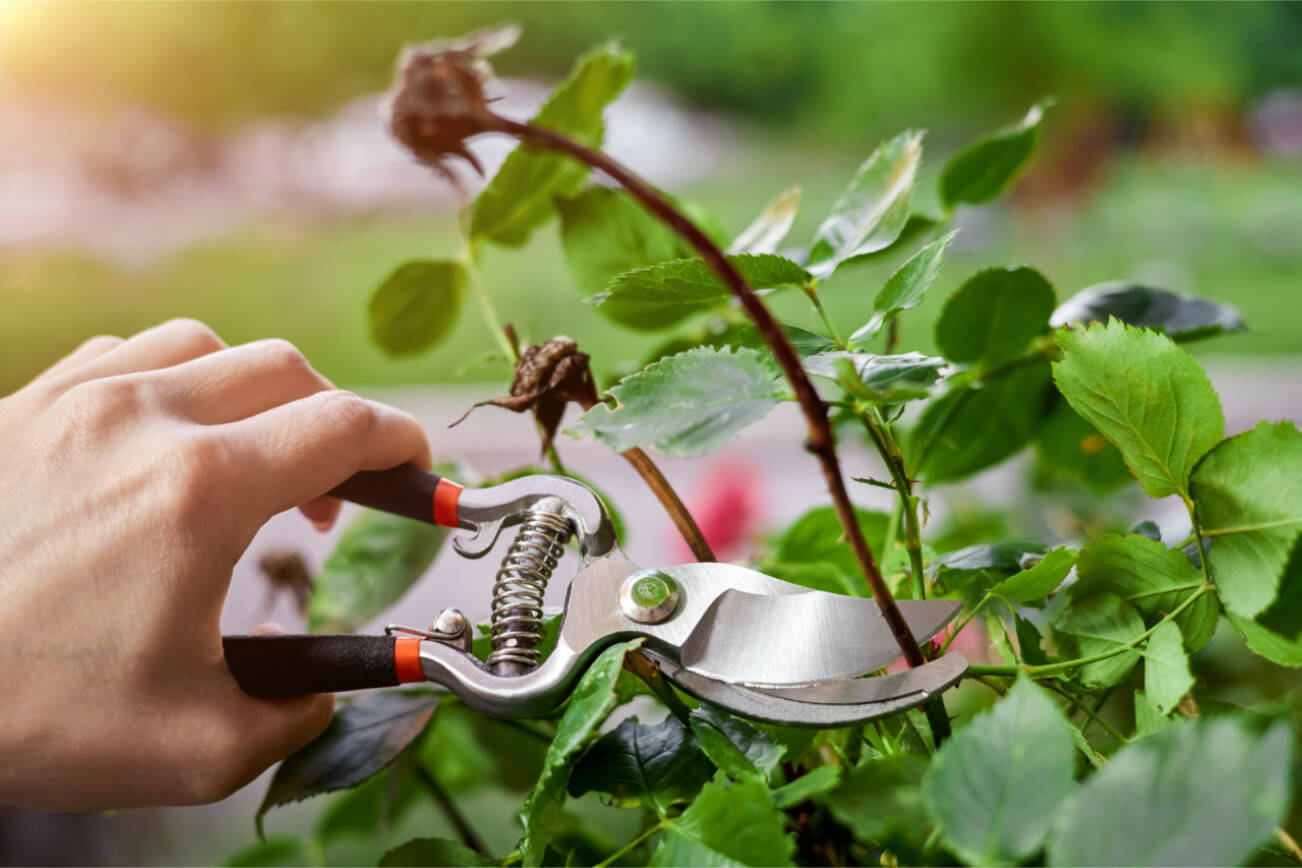Home>Gardening Techniques>Plant Care>How To Trim Succulents Back


Plant Care
How To Trim Succulents Back
Modified: February 9, 2024
Learn how to properly trim succulents back for optimal plant care. Expert tips and techniques to keep your succulents healthy and thriving.
(Many of the links in this article redirect to a specific reviewed product. Your purchase of these products through affiliate links helps to generate commission for Chicagolandgardening.com, at no extra cost. Learn more)
Table of Contents
Introduction
Welcome to the world of succulents! These unique and beautiful plants have gained immense popularity in recent years for their stunning appearance and low-maintenance requirements. Succulents are a diverse group of plants that store water in their leaves and stems, making them perfect for arid and drought-prone regions.
While succulents are known for their resilience and ability to thrive in harsh conditions, they still require regular care and maintenance to ensure their health and longevity. One important aspect of succulent care is trimming. Trimming, also known as pruning, is the process of removing overgrown, damaged, or diseased parts of the plant to promote growth and aesthetics.
Effective trimming of succulents not only helps maintain their shape and size but also encourages new growth and prevents issues such as pests and diseases. By following the correct techniques and adopting some essential tools, you can keep your succulents looking their best and ensure their overall well-being.
In this comprehensive guide, we will explore the art of trimming succulents. Whether you are a beginner or an experienced succulent enthusiast, you will find valuable tips and step-by-step instructions to help you master this essential aspect of plant care. So, let’s dive in and learn how to trim succulents back to perfection!
Understanding Succulent Growth
Before diving into the process of trimming succulents, it is important to have a basic understanding of how these plants grow. Succulents have unique growth patterns that differ from other types of plants, and this knowledge will help you make informed decisions when it comes to their care.
Succulents are adapted to survive in arid environments by storing water in their leaves, stems, or roots. This water storage capacity allows them to go for extended periods without being watered, making them excellent choices for busy individuals or those with limited access to water.
Unlike many other plants that exhibit vertical growth, succulents often grow in a rosette pattern, forming a compact spiral of leaves around a central point. This growth habit gives succulents their characteristic shape and is an essential factor to consider when trimming them.
Succulents also have the ability to propagate through various methods such as offsets, leaf cuttings, and stem cuttings. This means that by trimming a succulent, you not only shape and maintain the existing plant but also create new opportunities for propagation and expansion of your succulent collection.
It’s worth noting that succulents have different growth rates and patterns depending on the species. Some succulents grow relatively slow, while others may have rapid growth rates. Understanding the growth habits of your specific succulent will help you determine the frequency and extent of trimming required.
Additionally, certain species of succulents may have specific growth tendencies. For example, some succulents may elongate or stretch out due to insufficient sunlight, causing them to lose their compact form. Regular trimming and providing appropriate lighting conditions can help prevent this elongation and promote healthy growth.
Overall, a deep understanding of succulent growth patterns and tendencies will empower you to make informed decisions when it comes to trimming. By identifying the specific growth habits of your succulents, you can tailor your trimming techniques to ensure optimal health, shape, and beauty for your plants.
Reasons for Trimming Succulents
Trimming succulents is an important aspect of their care, and it serves several beneficial purposes. Understanding the reasons behind trimming will help you determine when and how to trim your succulents effectively.
1. Promotes Healthy Growth: Trimming allows you to remove dead, damaged, or diseased parts of the succulent, which can inhibit its growth and overall health. By eliminating these unwanted elements, you create space for new growth and divert the plant’s energy towards healthier areas.
2. Maintains Shape and Size: Succulents often have a desirable compact and symmetrical form. However, over time, they can become leggy or overgrown, losing their original shape. Trimming helps maintain the desired size and shape, ensuring that your succulents continue to look aesthetically pleasing.
3. Prevents Pest and Disease Issues: Removing dead or damaged parts of the succulent eliminates potential breeding grounds for pests and prevents the spread of diseases. Trimming also improves airflow and light penetration, reducing the risk of fungal and bacterial infections.
4. Enhances Propagation Opportunities: Trimming succulents is an excellent way to propagate new plants. Many succulents readily produce offsets, which can be separated from the parent plant and rooted to create new individuals. By strategically trimming, you can stimulate the growth of offsets and expand your succulent collection.
5. Improves Aesthetic Appeal: Regular trimming ensures that your succulents remain visually appealing. By removing any unsightly or overgrown parts, you can showcase the unique textures and colors of the succulent’s leaves or stems, enhancing their beauty as decorative plants.
6. Manages Overcrowding: If you have multiple succulents planted closely together, they can eventually start competing for resources, leading to stunted growth or diminished health. Trimming helps manage overcrowding by creating space between plants and allowing each succulent to thrive individually.
Remember, the frequency and extent of trimming will depend on the specific needs of your succulents. Some succulents may require more frequent trimming, while others may need minimal attention. By observing and understanding your plants’ growth and health, you can determine the ideal trimming schedule and techniques to keep your succulents in top condition.
Tools and Materials Required
When it comes to trimming succulents, having the right tools and materials is essential for a successful and efficient process. Here are some items you will need:
- Pruning Shears: A pair of sharp pruning shears is a must-have tool for trimming succulents. These shears are designed to make clean cuts, minimizing the risk of damage to the plant. Ensure that the shears are clean and sterilized before use to prevent the spread of diseases.
- Garden Gloves: Wearing gloves while trimming succulents protects your hands from sharp spines or prickly leaves. Opt for gloves that are flexible and breathable to provide comfort during the trimming process.
- Disinfectant: To prevent the transmission of diseases, it is important to disinfect your tools before and after each use. Use a mild disinfectant solution or rubbing alcohol to clean your shears and other cutting tools.
- Potting Mix: If your succulent requires repotting after trimming, you will need a well-draining potting mix. Choose a mix specifically formulated for succulents and cacti, or create your own by combining regular potting soil with coarse sand or perlite.
- Pots or Containers: Depending on your succulent’s size and growth requirements, you may need new pots or containers to repot the trimmed plant or propagate new succulents. Ensure that the pots have drainage holes to prevent waterlogged soil.
- Rooting Hormone (optional): If you plan to propagate succulents from leaf or stem cuttings, using a rooting hormone can help stimulate root growth and increase the success rate of propagation. However, this is optional and not strictly necessary.
- Clean Cloth or Paper Towels: Having a clean cloth or paper towels on hand will assist in wiping down the tools, removing excess moisture, and keeping your work area tidy.
- Watering Can or Spray Bottle: After trimming, succulents may require a light misting or watering to help them recover and settle into their new growth pattern. Having a watering can or spray bottle nearby will be useful for this purpose.
These tools and materials will provide you with everything you need to embark on your succulent trimming journey. Remember to clean and disinfect your tools regularly to maintain plant health and prevent the spread of diseases. By having these essentials in your gardening arsenal, you’ll be well-prepared to give your succulents the care they deserve.
Step-by-Step Guide to Trimming Succulents
Trimming succulents is a straightforward process, but it requires precision and care to avoid damaging the plant. Follow these step-by-step instructions to ensure a successful trimming session:
- Prepare your tools and workspace: Gather all the necessary tools and materials mentioned above. Set up a clean and well-lit workspace where you can comfortably trim your succulents without creating a mess.
- Inspect your succulent: Take a close look at your succulent and identify any dead, damaged, or diseased parts that need to be removed. These can include brown or yellow leaves, shriveled stems, or any signs of rot or disease.
- Sterilize your tools: Before you start trimming, make sure to clean and sterilize your pruning shears and any other cutting tools you’ll be using. This will help prevent the spread of diseases between plants.
- Remove dead or damaged parts: Using your sterilized pruning shears, carefully trim away the dead or damaged parts of the succulent. Make clean cuts as close to the healthy section as possible, avoiding any unnecessary damage to the plant.
- Trim leggy or overgrown succulents: If your succulent has become leggy or excessively elongated, you can trim it back to a more compact form. Identify where you want the plant to have a new growth point, and make a clean cut just above a leaf node or along the stem.
- Allow the cuttings to callus: If you plan to propagate new succulents from the trimmings, set them aside in a dry and well-ventilated area to allow the cut ends to callus over. This process typically takes a few days to a week, during which the cut ends will form a protective layer.
- Repot or propagate (optional): Once the cuttings have callused, you can choose to repot them in fresh succulent potting mix or proceed with the propagation process. Insert the callused ends into the soil, ensuring they have good contact and support.
- Water and care for the trimmed succulents: After trimming, lightly water the trimmed succulents to provide them with moisture and aid in their recovery. Be careful not to overwater, as succulents are susceptible to root rot. Maintain appropriate watering and care routines for your newly trimmed plants.
- Monitor and observe: Keep a close eye on your trimmed succulents and monitor their progress. Look for signs of new growth and assess the overall health of the plants. Continue providing regular care and adjust trimming as necessary in the future.
Remember, each succulent is unique, and the extent of trimming required may vary. Pay attention to the specific needs and growth patterns of your succulents to determine the best approach for trimming and promoting their health and aesthetic appeal.
Tips and Precautions
Trimming succulents is a delicate process that requires careful attention and adherence to certain tips and precautions. Follow these guidelines to ensure the best results and maintain the health of your succulents:
- Trim during the growing season: It is best to trim succulents during their active growth season, which is typically in spring or summer. This is when the plants have the highest capacity for recovery and new growth.
- Take it slow: Avoid trimming too much of the succulent at once. Start with conservative trims and observe how the plant reacts. You can always continue trimming gradually over time if necessary.
- Handle with care: Be gentle when handling succulents, as their leaves and stems are delicate and can break easily. Avoid pulling or ripping the succulent during trimming, as this can cause unnecessary damage.
- Be cautious of sap: Some succulent species, such as Euphorbias, produce a milky sap that can irritate the skin or cause allergic reactions. Take precautions by wearing gloves and washing your hands thoroughly after handling these plants.
- Allow for healing: After trimming, give your succulents some time to heal and adjust before exposing them to direct sunlight or extreme temperatures. Keep them in a shaded area for a few days to prevent sunburn or stress.
- Monitor for pests and diseases: Regularly inspect your succulents for signs of pests or diseases, especially after trimming. Early detection and intervention can prevent further issues and maintain the overall health of your plants.
- Choose the right time: Avoid trimming succulents during periods of dormancy or stress, such as winter or extreme heat. Trimming during these times can hinder the plant’s ability to recover and increase the risk of damage or infection.
- Experiment with propagation: Trimming provides an opportunity to experiment with propagating new succulents. Explore different propagation methods such as leaf or stem cuttings, and enjoy the process of growing new plants from your trimmings.
- Research your specific succulent: Different succulent species may have unique trimming requirements and growth patterns. Take the time to research the specific needs of your succulent to ensure you provide the appropriate care and trimming techniques.
By following these tips and taking necessary precautions, you can confidently trim your succulents and maintain their health, beauty, and longevity. Remember to have patience and enjoy the process of caring for these fascinating plants.
Aftercare and Maintenance
After you have trimmed your succulents, it is essential to provide proper aftercare and ongoing maintenance to ensure their continued health and vitality. Here are some tips to follow:
- Allow for recovery: Give your trimmed succulents time to recover and adjust to their new growth pattern. Avoid overwatering or exposing them to direct sunlight immediately after trimming.
- Monitor watering: Succulents prefer well-draining soil and are highly susceptible to root rot. Adjust your watering routine accordingly, allowing the soil to dry out completely between waterings.
- Provide adequate sunlight: Most succulents thrive in bright, indirect light. Place them near a window or in an area with filtered sunlight, ensuring they receive at least 6 hours of sunlight each day.
- Fertilize occasionally: As succulents have low nutrient requirements, fertilize sparingly and only during the active growing season. Use a balanced, diluted fertilizer specifically formulated for succulents and follow the package instructions.
- Remove debris: Regularly check for fallen leaves or debris around your succulents and remove them. These can create a breeding ground for pests or cause fungal issues if left unattended.
- Monitor for pests and diseases: Keep a close eye on your succulents for any signs of pests or diseases. Common pests include mealybugs, aphids, and spider mites. If necessary, treat the affected plants using appropriate insecticides or organic pest control methods.
- Rotate for even growth: To promote even growth and prevent succulents from leaning towards the light, rotate them periodically. This encourages upright growth and ensures all sides of the plant receive adequate light exposure.
- Continued trimming: As your succulents grow, new leaves may become damaged, or the plant may outgrow its space. Regularly trim any dead or unsightly leaves, and consider repotting or dividing your succulents if they start to crowd each other.
- Research specific succulent care: Each succulent species may have unique care requirements and growth habits. Take the time to research and understand the specific needs of your succulents to provide optimal care and maintenance.
Remember, succulents are resilient plants, but they still require proper care and attention. By following these aftercare and maintenance tips, you can ensure that your trimmed succulents continue to flourish and bring beauty to your indoor or outdoor space.
Conclusion
Trimming succulents is a vital aspect of their care routine. By understanding succulent growth patterns, having the right tools, and following step-by-step instructions, you can successfully trim your succulents and promote their health, growth, and aesthetic appeal.
Trimming succulents serves various purposes, including promoting healthy growth, maintaining their shape and size, preventing pest and disease issues, enhancing propagation opportunities, and improving overall aesthetic appeal. By regularly trimming your succulents, you can enjoy the benefits of a well-maintained and thriving collection.
Throughout the trimming process, it is important to take precautions and follow useful tips to ensure success. Handle your succulents with care, sterilize your tools, and monitor for signs of pests and diseases. Creating a suitable aftercare routine and providing ongoing maintenance will help your trimmed succulents continue to thrive.
Remember to research the specific needs of your succulents, as different species may require unique care and attention. By tailoring your trimming techniques and ongoing care to the specific requirements of your succulents, you can maximize their health, longevity, and overall beauty.
Now that you are armed with the knowledge and guidance to trim succulents with confidence, go ahead and give your plants the attention they deserve. Enjoy the process of caring for these fascinating plants and watching them thrive through your efforts!








